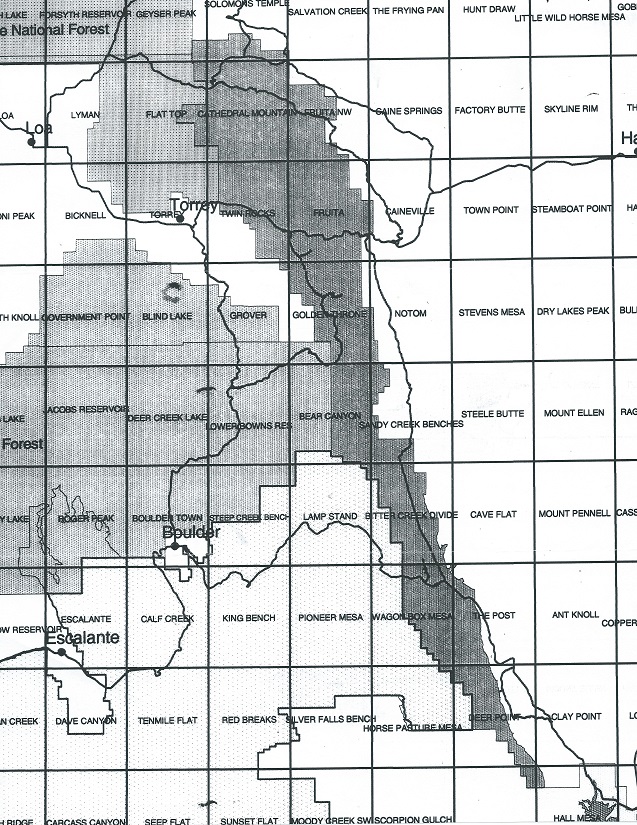Route Finding: The ease or difficulty of following a route is mostly a function of landmarks. If there are good landmarks at appropriate places along the route the directions will be easy to follow, Marginal landmarks make following the description more difficult, A lack of good landmarks makes for difficult time following the written directions and a need for good map reading skills.
Scrambling: There are no climbing routes in this book and no rope work required for most experienced off-trail hikers. Admittedly, there is a gray area between a hard scramble and an easy climb. I always carry 60 feet or more of line (webbing, climbing rope or something that will reliably support me) to help me or others over a short tricky spot. You should do the same.
There are at least three types of difficult scrambling that often crop up in Capitol Reef. One is loose material. It is bad when deep, requiring lots of energy to climb, but the dangerous part is loose material on a hard surface. This is where experience can be REQUIRED!
The second type of difficult scrambling is solid material. Small cliffs, pour-overs, short chimneys have turned me around countless times. If there are some good hand and foot holds the route will be used.
A third type of dangerous scrambling is over deceptive rock. The best, though not the only, example is the thick gypsum beds in the Carmel Formation. I consider that to be the most dangerous (not most difficult) formation in the Park. A route up through gypsum layer may look good but the rock is both sharp and incompetent. Beware! The route will probably traverse to a game trail but even then care needs to be taken.
Both the route finding and scrambling ratings for each are based on the most difficult section on the route, not average. On a hike labeled 'Difficult', scrambling may be easy most of the way with just one difficult ten foot stretch.
For a good measure of the total amount of energy required for the trip look at the time recommended.


